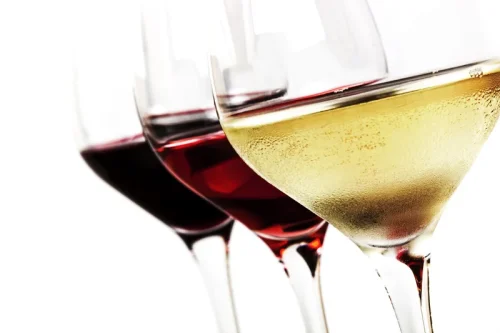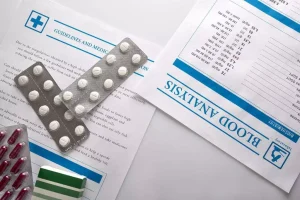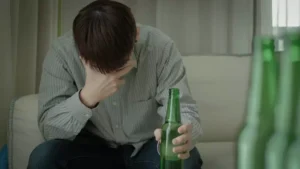
Nipping temptation in the bud is easier than stopping it when it’s got a full head of steam. You may also consider joining an online support group to help you feel less alone. It might also be worth checking out a 12-step program in your area, like Alcoholics Anonymous or SMART Recovery, to see if it feels like something that might be useful for you. Consider writing them down and keeping notes on hand, so you have a physical reminder to look at when you need it to help motivate you to stay the course. Finding or reaching out to other sober people can also help. She enjoys interviewing medical experts and researchers about their work and is passionate about communicating accurate and relevant health information to the public.
Hot weather hikes: Staying safe when temperatures spike
Many people also experience strong emotions they may have repressed while they were drinking, and experience stress when re-adjusting to daily life and building new routines that are alcohol-free. But until it does, you’ll likely experience especially strong cravings. It’s okay to rely on that designated person, that’s why they’re there. If you’re having an emergency — like suicidal feelings or mental breakdown — of course go to your nearest emergency room or urgent care, or call a crisis hotline.
Examine alcohol health effects

External triggers refer to the environmental cues you link to alcohol, including places, times, people, and situations. Most people who experience cravings notice a mix of internal and external triggers. Below, we’ll explore why cravings happen and offer a few tips to manage them, from in-the-moment techniques to long-term coping strategies. If you attend an event, know that it is okay to leave early if you are experiencing cravings—your goal of abstinence or moderate drinking is the priority. Friends and family may not understand at the moment, but you are doing what is right for you. Self-talk and affirmations are powerful cognitive tools in the journey of overcoming alcohol cravings.

Tips and Ways to Deal with Urges and Cravings to Drink

It could be that people who take semaglutide are less likely to seek medical care for their tobacco use without having necessarily abstained from such products. But Xu says that all the individuals sought tobacco-related healthcare at similar rates before starting https://ecosoberhouse.com/ their type 2 diabetes medications, so semaglutide may actually have been helpful. Ozempic’s potential to reduce alcohol consumption is now so well known that some people are seeking out the drug to help with their drinking, says Christian Hendershot.
Getting Professional Help
The urge to drink will inevitably come—so make a plan for it. Remind yourself of why you want to cut back, talk to a friend about it and distract yourself with a hobby or exercise, the NIAAA suggests. “Once you have a sense of how much you’re drinking, it’s helpful to track how many drinks you’re having per day,” says Witkiewitz. “You could use a calendar, journal or any number of tracking apps.” Drink Control Alcohol Tracker or Less are two examples of free tracking apps available on iOS devices. Just as different things can trigger alcohol cravings from person to person, different strategies can help you manage them.
Building a strong support system, whether through friends, family, or recovery groups, can provide the encouragement and accountability needed to navigate the challenges of curbing alcohol cravings. Positive Recovery’s community and resources can serve as a vital part of this support network, offering guidance, support, and a sense of belonging to those on the path to recovery.. Counseling, medication, support from family and friends, changing your diet, taking supplements, and alternative treatments may all help lessen your alcohol cravings. Naltrexone is a medication that belongs to a group of drugs known as opioid antagonists. It binds to and blocks opioid receptors in the brain, which reduces the buzz and intoxicated feeling you get from drinking alcohol.
Plan ahead to stay in control.

A positive distraction can help occupy your thoughts and energy, giving you something to focus on besides the urge to drink. “A typical craving might last for 3 to 5 minutes,” notes Christina Hanks, senior recovery coach and care team manager at Tempest. “Alcohol cravings can be very intense, especially in early recovery,” explains Ruby Mehta, licensed clinical social worker and director of clinical operations for digital recovery platform Tempest. As for the duration of a single craving episode, research indicates that most cravings usually peak and subside within 15 to 30 minutes. This might sound like a long time when you’re in the throes of a craving, but knowing that there’s an end in sight can be a powerful tool to help you resist. For example, as part of a broader healthy lifestyle, Vitamin B1 (Thiamine) and B3 (Niacin) can help restore nervous system and brain health.
- In a large-scale study of alcohol treatment methods, researchers found that a combination of medical management, medication, and cognitive-behavioral interventions was most effective.
- Outpatient treatment and alcohol aftercare programs are both ideal options for those who are looking to strengthen their ability to effectively manage alcohol cravings, among many other things.
- Along with medication and other treatment support, a range of alternative therapies may be effective in lessening alcohol cravings and other withdrawal symptoms.
- They can also leave you more sensitive to alcohol’s effects and raise your risk of withdrawal symptoms.
- Her fields of interest include Japanese translation, cooking, natural sciences, sex positivity, and mental health, along with books, books, and more books.
Once a person identifies the activities and situations that can cue their cravings, they can work to avoid some of them. For activities and situations a person cannot or does not want to avoid, they can use strategies to overcome the cravings that occur. Over time, many people find their cravings easier to control how to stop alcohol cravings and reduce in strength. Stress and tension can cause cravings and make a craving feel worse. Practicing mindfulness and relaxation techniques can help a person stay in the present and relax, which may reduce the craving. When they occur, alcohol cravings can feel overwhelming, even if they last only a few minutes.
- Distraction can be a useful tool to help a person manage alcohol cravings in the moment.
- The National Institute of Alcohol Abuse and Alcoholism (NIAAA) encourages medical providers to screen patients for alcohol consumption and initiate interventions aimed at harm reduction.
- Participation in one or more of these levels of care can help an individual access the care they need, allowing them the opportunity to develop a strong foundation for recovery.
- They found that semaglutide users were noticeably less likely to be diagnosed with tobacco use disorder or to be given treatments for it (i.e., drugs or counseling) over the following year.
- Let friends, family members, and co-workers know that you’re trying to stop or cut back on drinking.
- To get started, try searching a directory like Psychology Today or Inclusive Therapists, both of which have filters you can use to look for specific support around substance use.
- Her fields of interest include Asian languages and literature, Japanese translation, cooking, natural sciences, sex positivity, and mental health.
- Although many people are tempted to make other major life changes during this stage of recovery, such as changing jobs, experts recommend focusing energy on stopping drinking for at least the first year.
- For some, they pass quickly, while for others, it takes a longer for them to resolve.
“I was hoping that I would be one of the people that the drug affected this way,” says Johnston, who’s a real estate agent in Washington, D.C. On the other hand, if you have diabetes and you want to curb your alcohol intake then definitely talk to your doctor about the option of semaglutide, Leggio says. “Even more so if you have obesity and alcohol use disorder. Absolutely. Speak with your doctor.” “Dopamine in the striatum [the brain’s motivation center] is the motivation and learning signal for everything. Not just for food,” DiFeliceantonio says.

